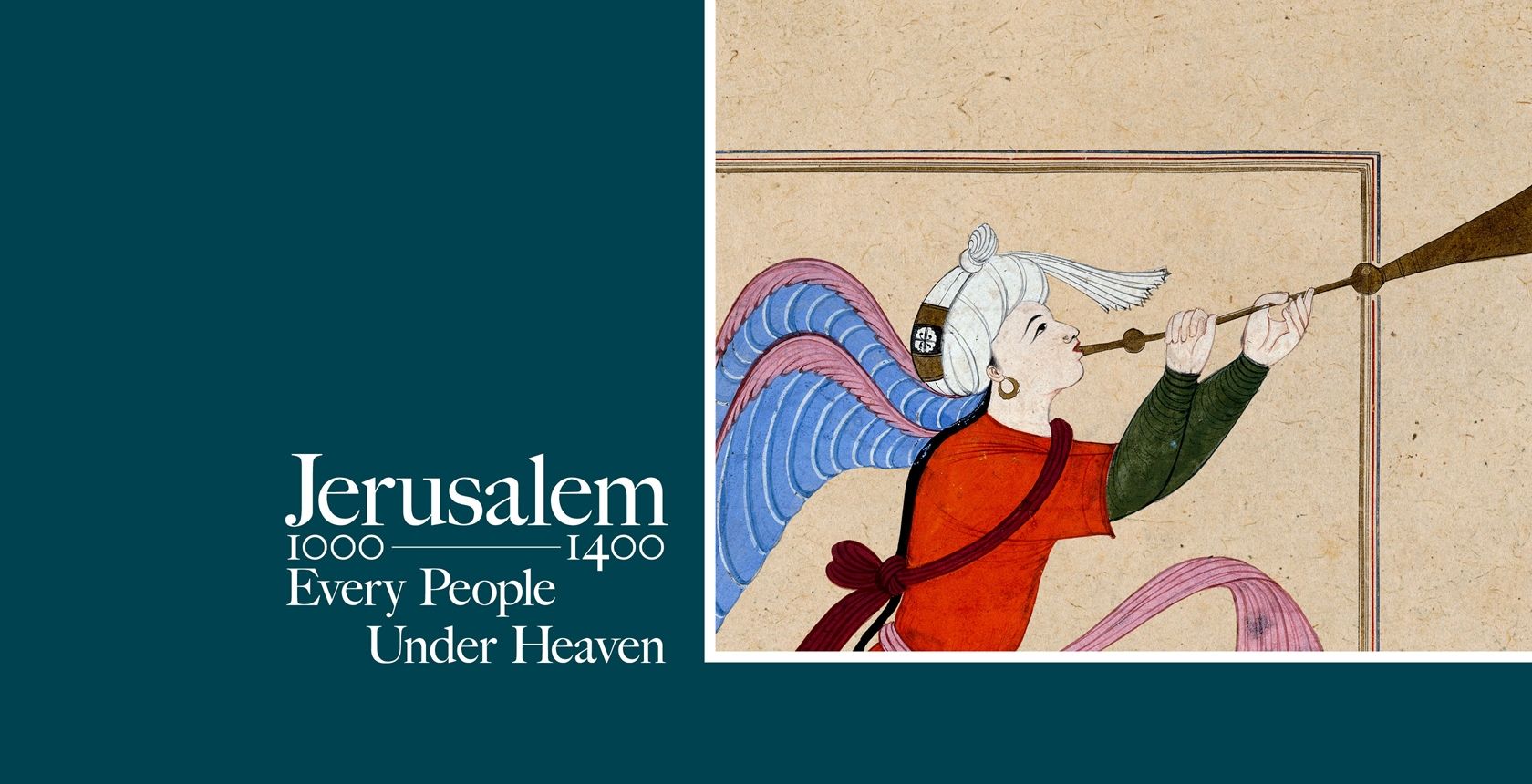How, then, did the exhibition reconcile the idea of Holy War with the idea of medieval Jerusalem as a multicultural beacon? First, as one moved through the gallery, the idea of “wag[ing] battle in the name of God against those perceived as infidels” became more limited and attenuated. The main practitioners of this form of warfare, it emerged, were the Christian Crusaders who arrived from Europe “to claim Jerusalem as rightfully theirs,” a campaign that ended in victory in 1099 “with the merciless slaughter of the city’s inhabitants.” And indeed, most of the artifacts in this gallery were associated with the Crusaders or invoked them: a 12th-century charcoal image of a military “saint” on horseback, a 12th-century marble capital showing a rider trampling his enemy underfoot, a 13th-century tomb of a French knight, a 12th-century map of Crusader Jerusalem, and so forth.
The gallery “Holy War” was thus really meant to be an intrusion, an anomaly. The Crusader conquest of Jerusalem was, we were to think, a kind of one-off example of “extreme ethnic and religious cleansing.” But what, then, of the Islamic reconquest of the city, and what of the role of Islamic jihad in general? Strikingly, only one significant artifact in this gallery was associated with Islam: a gilded Treatise on Armor from early-12th-century Syria that “belonged to Saladin, famed to this day for bringing an end to European control of Jerusalem” and for “rededicat[ing]” its Islamic sites. Was Saladin, then, also involved in Holy War? Not according to the curators, who write in the catalog that it was the Crusaders who “fueled” the idea of Holy War, turning jihad—until then a concept of spiritual struggle alone—into one of military struggle. So the Crusaders not only introduced Holy War, they also caused Muslim leaders to distort their own religious teachings by adopting a kind of Holy War in response.
If this argument sounds familiar, it should: a similar argument has gained much traction in recent years among those who regard 9/11 and other Islamist terrorist attacks as a form of deserved blowback for prior Western offenses against Muslims. Intent on its own version of this judgment, the exhibition portrayed the Crusaders as both the single exception to, and the primal cause of any further disruption of, the multicultural paradise of medieval Jerusalem.Well, at least, for once, no one blamed the Jews.
Then again, no one had to, for the message re the enduring importance of "diversity" in Jerusalem, a message which ignores how Christians have been ethnically cleansed from Bethlehem by Saladin's heirs, is both implicit and explicit.


No comments:
Post a Comment